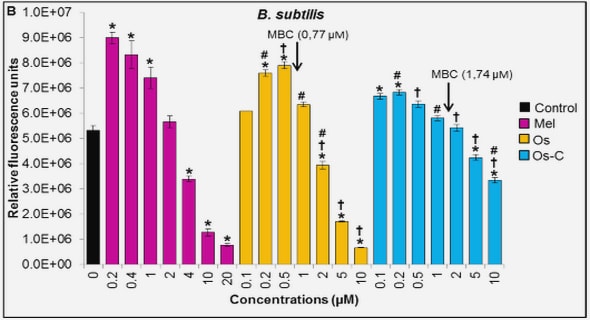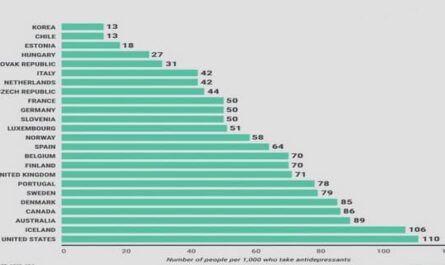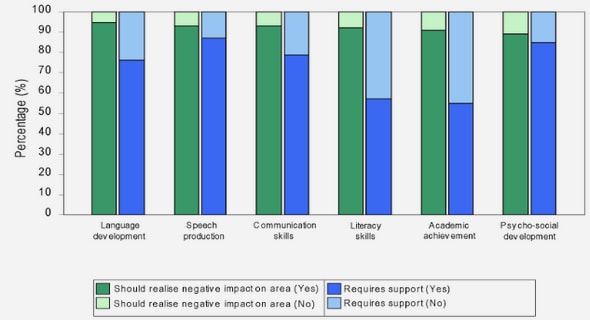Get Complete Project Material File(s) Now! »
HTS : macroscopic models
HTS materials are type-II in nature, and the magnetic flux entering a type-II superconductor does so in the form of vortices. Super-currents flow around vortices to shield them from the superconducting matrix. These vortices always appeared in the sample initially from the edges of the material. Their motion inward is impeded by pinning sites due to irregularities in the material microstructure, such as lattice defects, grain boundaries, and dislocations [10].
Because of these pinning sites, type-II superconductor are characterized by an irreversible magnetization and a trapped magnetic field.
Critical state model : Bean model
A critical state model (CSM) is often used to represent the dynamics and different operation modes of vortices.
Critical state models are based on the macroscopic behaviour of superconduct-ing materials, derived from experimental observations of the relationship between current density and magnetic field. The critical state occurs when an applied field exceeds a type-II superconductor’s lower critical magnetic field Hc1. Magnetic flux vortices with circulating shielding currents penetrate the material to shield the interior of the material from the applied current/field.
Where there is a current flowing in the superconductor, the magnetic field experiences a Lorentz force Fl = J B . For a large Lorentz force, the vortices become de-pinned and move in the direction of the force with a velocity vv. this vortex movement will induce an electric field E = B vv. Thus, E = (kJk)J (1.1).
In order to maintain a superconduting state, all CSMs state that the current density should not exceed the critical current density Jc.
The Bean model is the simplest of all CSMs. It states that the magnitude of the superconductor’s current density takes values of either 0 where the perfect diamagnetism property holds or Jc in the mixed state. When the superconductor is entirely penetrated with Jc, the superconductor is characterized by a critical state.
E-J power law
Some HTS materials are characterized by an ill-defined critical current density. An-derson[33] proposed a flux creep theory where the relationship between the electric field and the current density is not discontinuous. In this theory, vortices move slowly, due to thermal activation, at current lower than the critical current, then an electric field appears and losses occur. Rhyner [11] proposed the following E J power law : J n E = Ec (1.2) Jc with Jc = Jc(B; T ), n = n(B; T ) and the critical electric field Ec = 10 4 V/m.
The power law index n is dependent on the HTS properties and microstructure. The extreme case of n = 1 and n = 1 correspond to the linear Ohm law and the Bean’s model.
Kim model
It is the commonly used model characterizing the magnetic field dependence of the critical current density. Kim and Anderson [12] showed that the critical current density in a type-II superconductor exhibit a strong dependence on temperature, as well as magnetic field. It was also recognized by Bean [14]. The model devel-oped states that the critical current density decreases with the local magnetic field according to : Jc(B; T ) = Jc0(T ) 1 + kB0k 1 (1.3).
with B0 a constant and Jc0 is the critical current density at zero field, which is a temperature-dependent constant of the material.
Finite element – Finite volume hybrid method
It is usually implemented to solve convection-diffusion partial differential equations where the diffusion equations are discretized using the finite element method and the convection equations are discretized using the finite volume method. Moreover, equivalence of the computed projection of the finite element method solution on the finite volume method mesh and vice versa allows mathematically a successful numerical implementation of this hybrid approach.
Specific operators must be implemented in order to successfully compute the equivalent projection of the solution. These operators ensure the coupling between the finite element discrete form and the finite volume discrete form.
It can be applied to both structured and unstructured meshed domains of com-plex geometries. Based on nodes and elements, as control volumes, of the meshed domain, a volume integral formulation of the problem is discretized. According to this approach, the global solution is assumed to be piecewise constant.
Kameni et al [59]-[60] implemented this approach for the specific case of mod-eling, based on the E-formulation, high-temperature superconductors in 2D. In the partial differential equations associated to the E-formulation, the nodal finite ele-ment method appears to be not suitable for the treatment of non-linear terms while the finite volume method does not approximate well the diffusion terms because of the gradient operator. Thus, the finite volume method will be implemented in the discrete form based on the nodal finite element method to deal efficiently with the non-linear terms. The nodal finite element method will be used for the discrete form of the finite volume method in order to approximate effectively the diffusion terms. For the coupling of both methods in order to solve the E-formulation, well-defined operators will be derived in order to successfully compute the equivalent projected solution in either finite element or finite volume meshed domain.
The developed method is robust and efficient. Unlike the finite element method, it allows the modeling of superconductors with an n-value as high as 200.
The mixed approach combining both finite element method and finite volume method, to solve non-linear equations system describing superconductors, is tedious to extend in 3D. Despite its robustness and efficiency, specific opera-tors must be well-defined for 3D geometries of any complexity.
Discontinuous Galerkin method
This method [61] is using aspects of both the Finite volume method and Finite elements method. On each element of the studied mesh, a finite element approach is implemented to discretize the problem. Moreover, interface terms, defined on each element face, are replaced by equivalent integrals of well-defined numerical fluxes. Numerical fluxes are evaluated, using the symmetry interior penalty method, in order to ensure the convergence of the problem.
The discrete system consists of block diagonal matrices with each blocks made of volume terms and interface terms.
Because of the structure of its matricial system, this method allows naturally a scalability in both memory and computations through parallel processing. More-over, the discontinuous character of the local approximated problem allows a flex- ible treatment of the non-linearities.
The discontinuous galerkin method investigated by Kameni et al [62]-[64] for the E-formulation provides numerically the adequate framework to deal with the commonly encountered large matrice size mentioned in all the numerical approaches above. Its framework is naturally prone to parallel computations which neglect the limited memory problem occurring with the finite element method. Despite its robustness and efficiency, solving the E-formulation is not appropriate for complex geometries in 3D. It requires the analytical evaluation of demagnetization coefficients of the studied domain in order to compute the electro-magnetic behaviour without a surrounding air domain. Such an evaluation is too complicated for geometries which includes twisted multi-filamentary superconductors for instance.
In the following thesis work, this approach implementation to solve the H-formulation will be investigated.
Numerical treatment of the non-linearities arising from E = (J)J
The electrical behaviour of the superconducting domain s is defined by a non- linear power law as shown in (2.2) and (2.3).Therefore, the discrete variational formulation, expressed in (3.14), must take in account those non-linearities.
First, a linearization of the vectorial power law is necessary in order to avoid using a residual resistivity and to ensure the convergence of the problem. Therefore, we have the following indicial notation of the combination of (3.14) and (2.3) in the superconducting domain s : Ei = Ec (JmJm)(n 1)=2 Ji , i; m = 1; 2; 3 (2.18) n Jc.
E = Ei is differentiable function with respect to the vector field J = Ji. Thus, the first-order Taylor expansion of the vector field Ei around J0 = (J1;0; J2;0; J3;0) can be derived as follows : E(J) = E(J0) + J (J J0) (2.19).
Table of contents :
1 Superconductivity and numerical modelling
1.1 Introduction
1.2 Superconductors : types I and II
1.2.1 Type-I superconductors
1.2.2 Type-II superconductors
1.3 HTS: macroscopic models
1.3.1 Critical state model : Bean model
1.3.2 E-J power law
1.3.3 Kim model
1.3.4 AC losses
1.4 HTS applications
1.5 Mathematical models
1.5.1 H formulation
1.5.2 E formulation
1.5.3 A V formulation
1.5.4 T formulation
1.6 Numerical methods
1.6.1 Minimization of an energy functional
1.6.2 Integral methods
1.6.3 Finite element method
1.6.4 Finite volume method
1.6.5 Finite element – Finite volume hybrid method
1.6.6 Discontinuous Galerkin method
1.7 Conclusion
2 3D modelling of high-temperature superconductors
2.1 Introduction
2.2 Problem formulation
2.2.1 Constitutive laws
2.2.2 Differential formulation
2.2.3 Variational formulation
2.3 Finite element method
2.3.1 Mesh definition
2.3.2 Discrete variational formulation
2.3.3 Numerical treatment of the non-linearities arising from E =0
2.4 Discontinuous Galerkin method
2.4.1 Mesh definition
2.4.2 Discrete Variational formulation
2.4.3 Spatial approximation
2.4.4 Numerical fluxes terms on the faces of the mesh Th
2.4.5 Boundary conditions
2.4.6 Numerical treatment of the non-linearities arising from E = (J)J
2.5 Comparisons and validations
2.5.1 Straight superconducting filament embedded in a Niobium matrix carrying a sinusoidal transport current
2.5.2 Superconducting cube subjected to an alternating transverse magnetic field
2.6 Conclusion
3 3D modelling of twisted multi-filamentary superconducting wires
3.1 Introduction
3.2 Influence of a transverse magnetic field on a twisted mono-filament wire
3.3 Mapping from a twisted mono-filament wire to a straight monofilament wire
3.4 Mapping validation on a twisted bi-filaments wire
3.4.1 Twisted bi-filaments superconducting wire subjected to a transverse magnetic field along the y-axis
3.4.2 Twisted bi-filaments superconducting wire subjected to an axial magnetic field along the z-axis
3.5 Mapping validation on a twisted six-filaments wire
3.5.1 Twisted six-filaments superconducting wire subjected to a transverse magnetic field along the y-axis
3.5.2 Twisted six-filaments superconducting wire subjected to an axial magnetic field along the z-axis
3.6 Study of multi-filamentary wires with multiple twist pitch
3.6.1 Influence of the number of twist pitch
3.6.2 Model-order reduction of a twisted multi-filamentary wire with multiple twist pitch
3.6.3 Analysis of the impact of elliptical fields on magnetization losses
3.7 Perspective : homogenization of multi-filamentary superconducting wire
3.8 Conclusion
General conclusion
Bibliography


